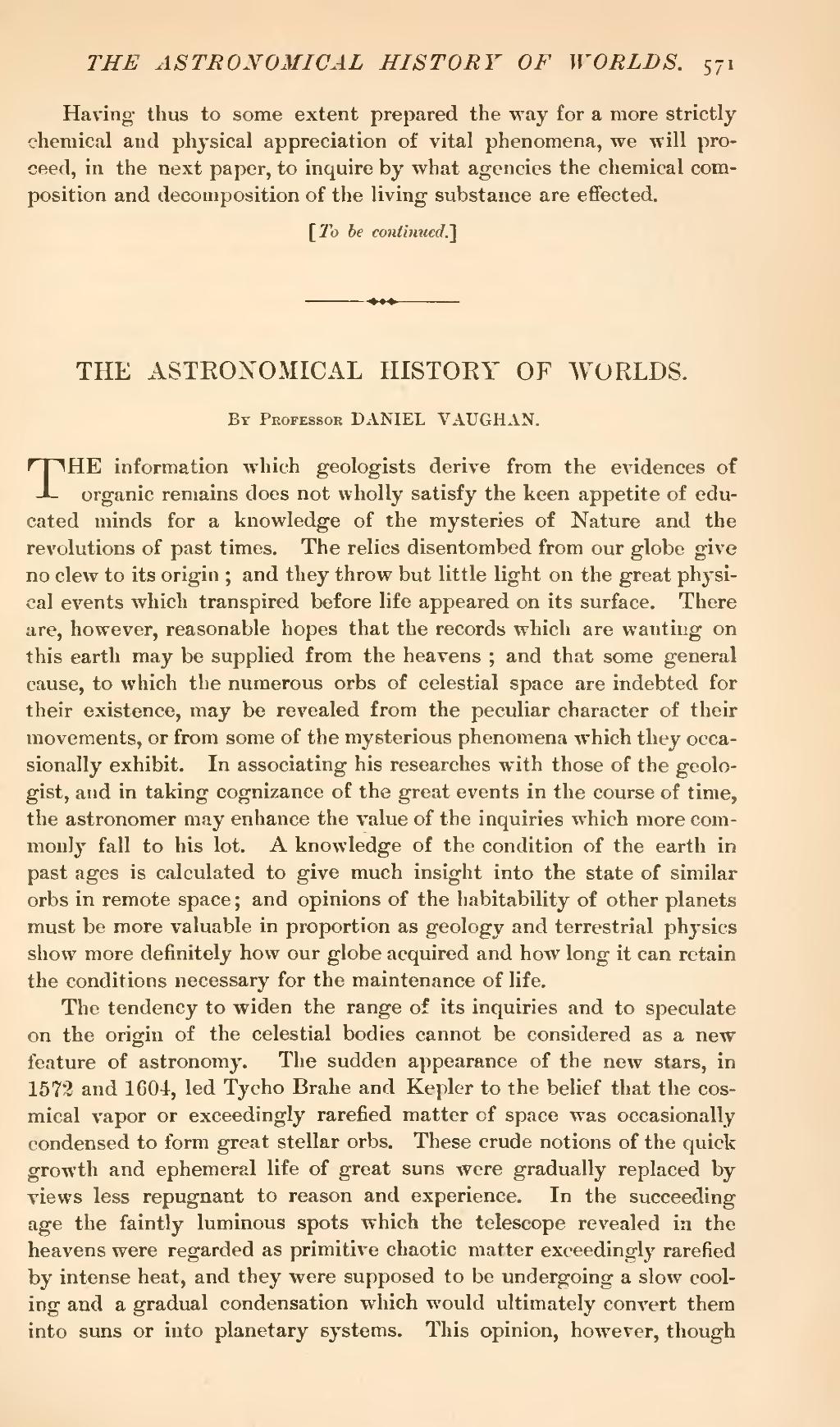Having thus to some extent prepared the way for a more strictly chemical and physical appreciation of vital phenomena, we will proceed, in the next paper, to inquire by what agencies the chemical composition and decomposition of the living substance are effected.
[To be continued.]
| THE ASTRONOMICAL HISTORY OF WORLDS. |
By Professor DANIEL VAUGHAN.
THE information which geologists derive from the evidences of organic remains does not wholly satisfy the keen appetite of educated minds for a knowledge of the mysteries of Nature and the revolutions of past times. The relics disentombed from our globe give no clew to its origin; and they throw but little light on the great physical events which transpired before life appeared on its surface. There are, however, reasonable hopes that the records which are wanting on this earth may be supplied from the heavens; and that some general cause, to which the numerous orbs of celestial space are indebted for their existence, may be revealed from the peculiar character of their movements, or from some of the mysterious phenomena which they occasionally exhibit. In associating his researches with those of the geologist, and in taking cognizance of the great events in the course of time, the astronomer may enhance the value of the inquiries which more commonly fall to his lot. A knowledge of the condition of the earth in past ages is calculated to give much insight into the state of similar orbs in remote space; and opinions of the habitability of other planets must be more valuable in proportion as geology and terrestrial physics show more definitely how our globe acquired and how long it can retain the conditions necessary for the maintenance of life.
The tendency to widen the range of its inquiries and to speculate on the origin of the celestial bodies cannot be considered as a new feature of astronomy. The sudden appearance of the new stars, in 1572 and 1604, led Tycho Brahe and Kepler to the belief that the cosmical vapor or exceedingly rarefied matter of space was occasionally condensed to form great stellar orbs. These crude notions of the quick growth and ephemeral life of great suns were gradually replaced by views less repugnant to reason and experience. In the succeeding age the faintly luminous spots which the telescope revealed in the heavens were regarded as primitive chaotic matter exceedingly rarefied by intense heat, and they were supposed to be undergoing a slow cooling and a gradual condensation which would ultimately convert them into suns or into planetary systems. This opinion, however, though
